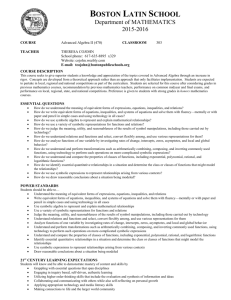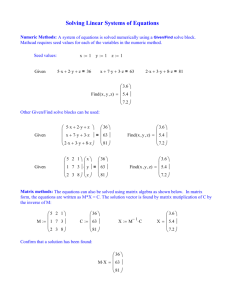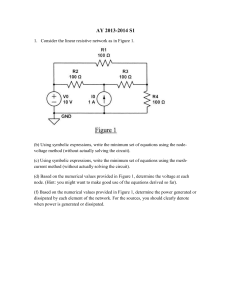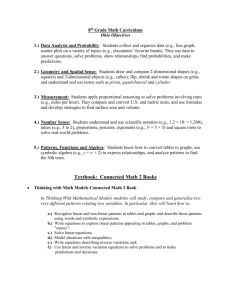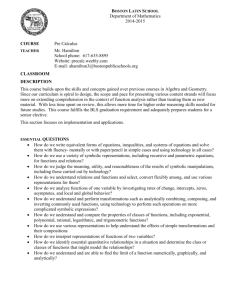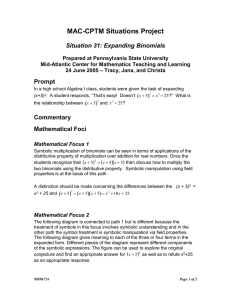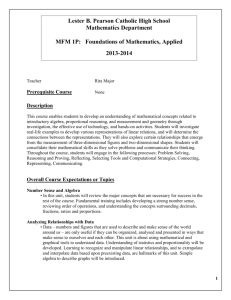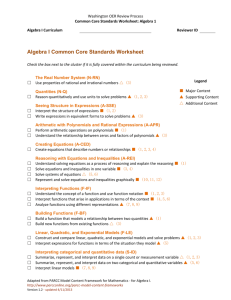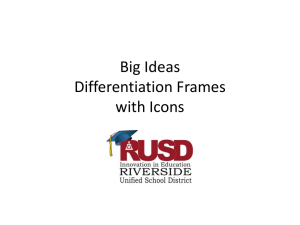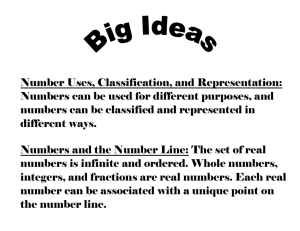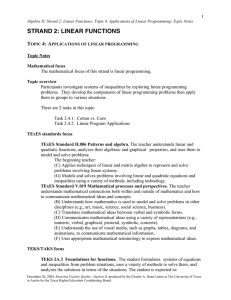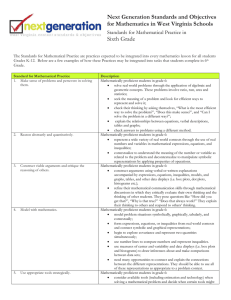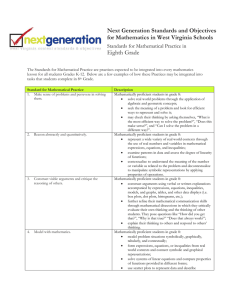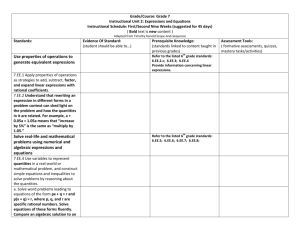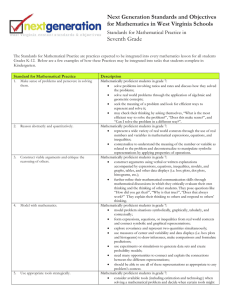Algebra Standard for Grades 9-12
advertisement
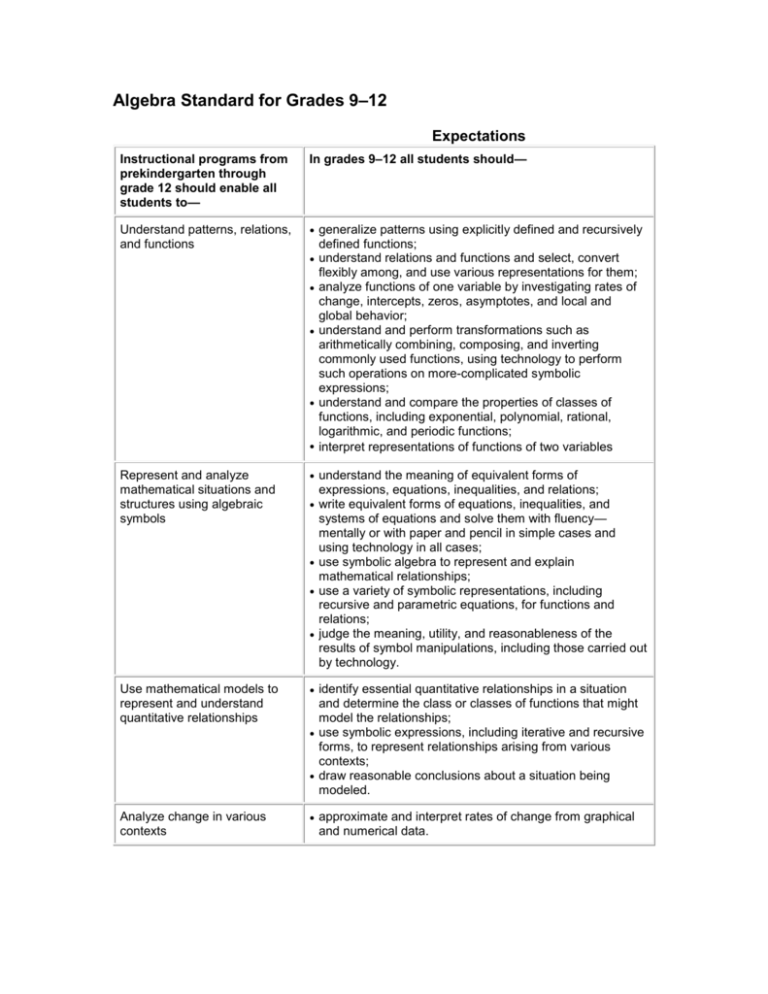
Algebra Standard for Grades 9–12 Expectations Instructional programs from prekindergarten through grade 12 should enable all students to— In grades 9–12 all students should— Understand patterns, relations, and functions • generalize patterns using explicitly defined and recursively defined functions; • understand relations and functions and select, convert flexibly among, and use various representations for them; • analyze functions of one variable by investigating rates of • • • Represent and analyze mathematical situations and structures using algebraic symbols • understand the meaning of equivalent forms of expressions, equations, inequalities, and relations; • write equivalent forms of equations, inequalities, and • • • Use mathematical models to represent and understand quantitative relationships systems of equations and solve them with fluency— mentally or with paper and pencil in simple cases and using technology in all cases; use symbolic algebra to represent and explain mathematical relationships; use a variety of symbolic representations, including recursive and parametric equations, for functions and relations; judge the meaning, utility, and reasonableness of the results of symbol manipulations, including those carried out by technology. • identify essential quantitative relationships in a situation • • Analyze change in various contexts change, intercepts, zeros, asymptotes, and local and global behavior; understand and perform transformations such as arithmetically combining, composing, and inverting commonly used functions, using technology to perform such operations on more-complicated symbolic expressions; understand and compare the properties of classes of functions, including exponential, polynomial, rational, logarithmic, and periodic functions; interpret representations of functions of two variables and determine the class or classes of functions that might model the relationships; use symbolic expressions, including iterative and recursive forms, to represent relationships arising from various contexts; draw reasonable conclusions about a situation being modeled. • approximate and interpret rates of change from graphical and numerical data.

